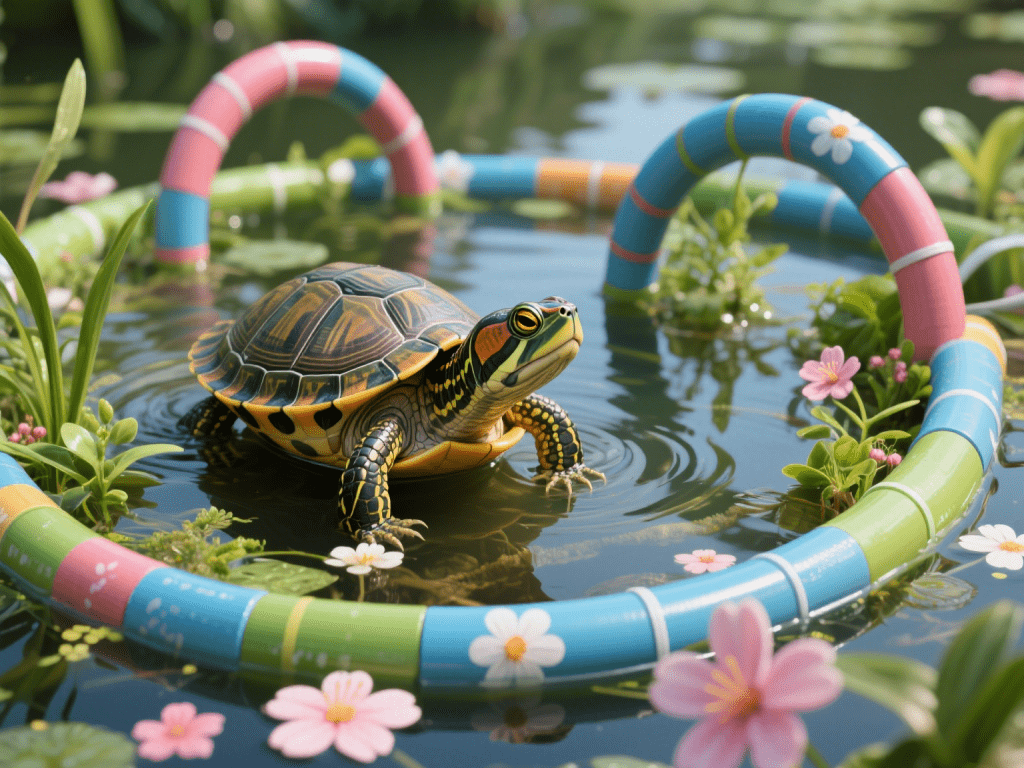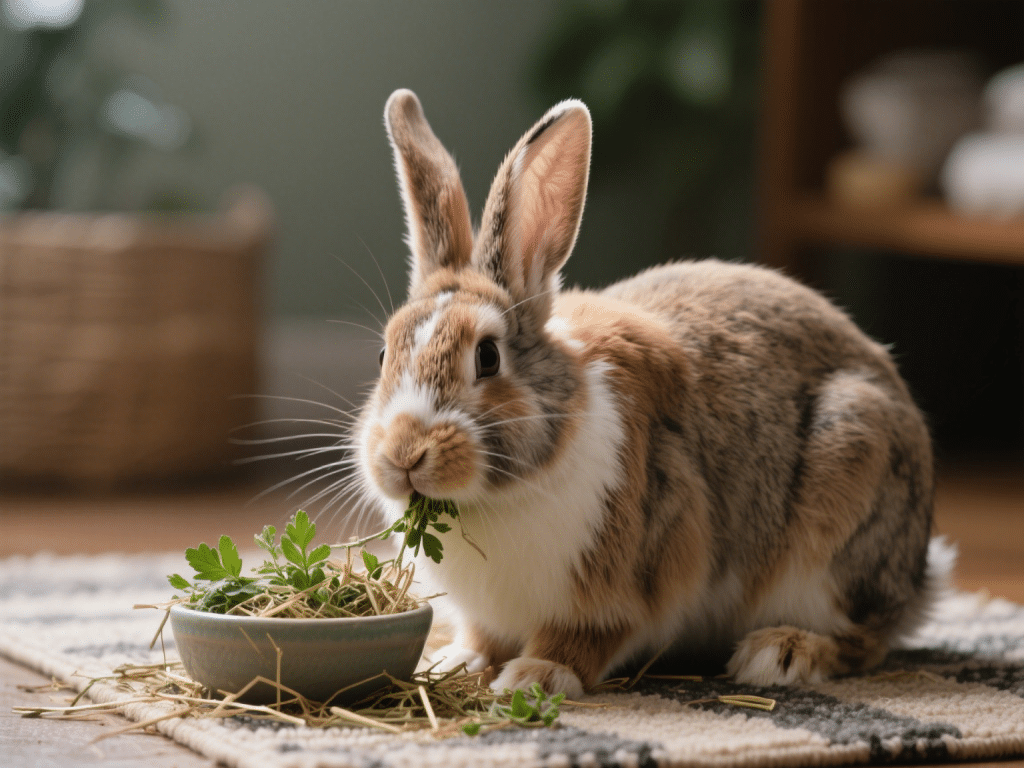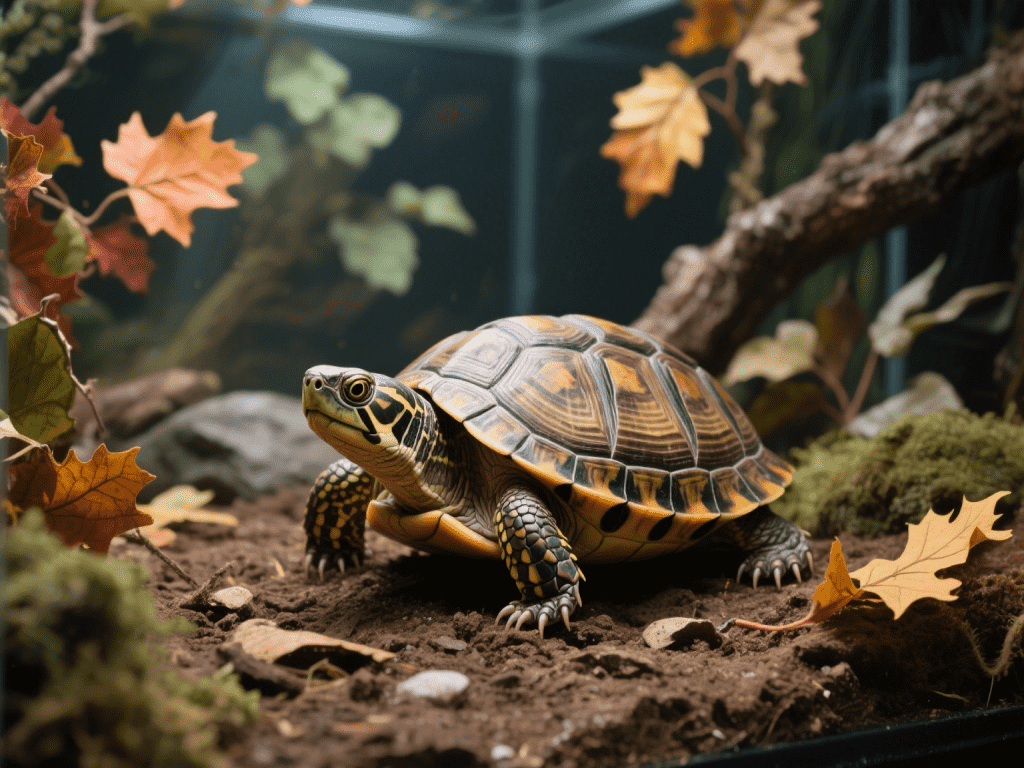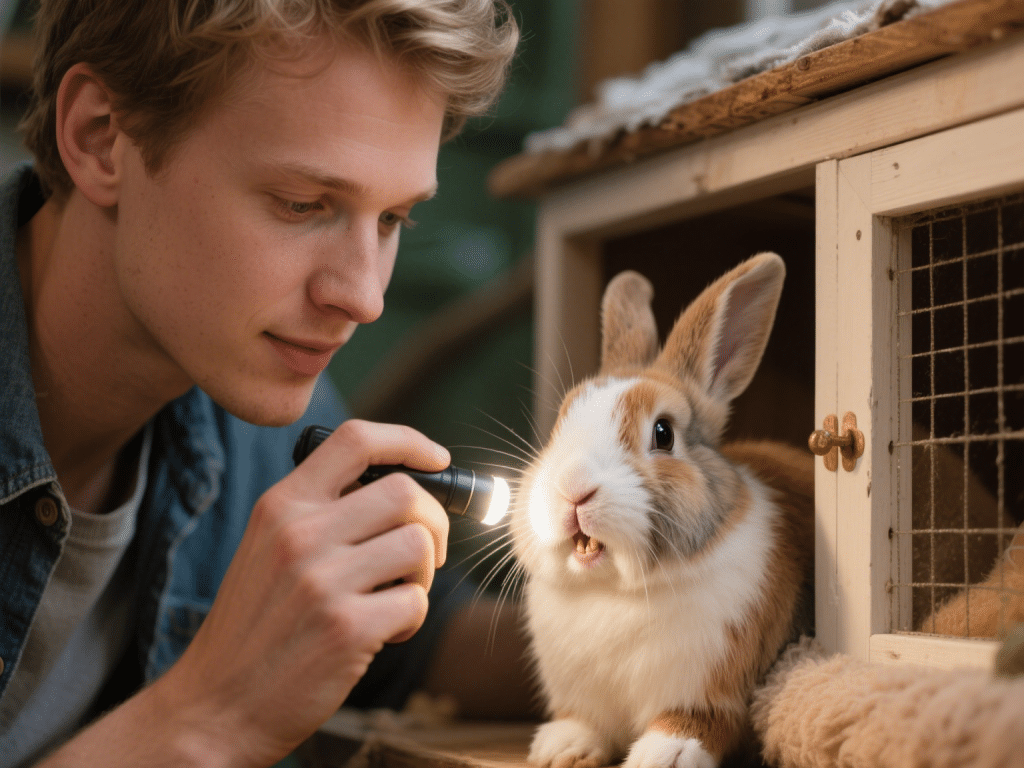
Maintaining a stimulating environment is essential for captive pet turtles, whose natural exploration and seasonal behaviors can become stunted in static enclosures. Over twenty years working in reptile enrichment research, I’ve developed a rotating calendar of DIY projects and seasonal activities designed to engage turtles’ instincts to forage, bask, and explore. This guide offers detailed blueprints and materials lists for each season—spring puzzle feeders, summer cooling stations, autumn foraging hikes, and winter sun huts—ensuring your turtle remains active, curious, and healthy throughout the year.
Spring: Foraging & Exploration
A. Floating Plant Raft Puzzle
Materials: 2 ft × 1 ft piece of closed‑cell foam, mesh cloth, suction cups, live duckweed and water lettuce.
Assembly: Attach mesh pockets to foam, fill with plants, and float at surface. Turtles push pockets aside to access greenery.
Benefit: Encourages surface swimming and foraging motions.
B. Shoreline Rock Maze
Materials: Flat stones of varying sizes, shallow bin lined with aquarium sand.
Layout: Place stones so turtles navigate narrow passages to reach hidden pellet treats.
Outcome: Stimulates cognitive mapping and fine motor skills.
Summer: Cooling & Thermal Choice
A. DIY Mist Station
Materials: Small submersible pump, fine‑mist nozzle, vinyl tubing, plastic clip.
Setup: Clip nozzle above basking area; timer‑controlled misting every 10 minutes keeps ambient humidity and surface cool.
Advantage: Prevents overheating while retaining basking opportunities.
B. Floating Ice Blocks
Materials: Leak‑proof plastic container, water, shredded lettuce or spinach, food‑safe dye (optional).
Procedure: Freeze blocks overnight, release into tank in afternoon heat.
Effect: Offers turtles a novel cooling surface and embedded treats.
Autumn: Cognitive Challenges
A. Leaf‑Litter Bottom
Materials: Sterilized autumn leaves, sand or pebbles, shallow feeding trays.
Implementation: Scatter leaves over substrate, hide pellets beneath leaf piles.
Benefit: Mimics forest floor foraging, tapping into seasonal instincts.
B. PVC Obstacle Course
Materials: 1 inch PVC pipes, T‑joints, elbow joints; assemble into winding tunnels suspended just above bottom.
Exercise: Turtles push through or navigate around obstacles to reach basking ramps, boosting agility.
Winter: Basking & Shelter
A. Insulated Sun Hut
Materials: Styrofoam box, removable lid, transparent acrylic window, small UVB lamp mount.
Construction: Cut window; mount UVB and ceramic heat emitter inside; provide inside bask platform.
Use: Offers a warm microclimate for mid‑winter UVB exposure and natural basking behavior.
B. Heating Pad Hide
Materials: Reptile-grade heating pad, digital thermostat, hide box (PVC or wood).
Setup: Place pad beneath hide; regulate to 80–85 °F inside.
Purpose: Allows turtles to thermoregulate safely when active winter care is needed.
Implementation & Rotation
Activity Calendar: Change enrichment every 2–3 weeks—rotate puzzles, change décor layouts, and introduce new DIY elements.
Behavior Tracking: Journal each activity’s engagement time, success in task completion, and any avoidance behaviors.
Safety Considerations: Always use non‑toxic, washable materials; supervise initial trials to prevent ingestion risks.
Conclusion:
By integrating seasonally tailored enrichment—from springtime plant rafts to winter sun huts—you’ll mirror the dynamic challenges turtles face in the wild. These DIY projects not only foster physical exercise and cognitive engagement but also deepen your bond with your pet, transforming routine care into interactive, enriching experiences year‑round.










